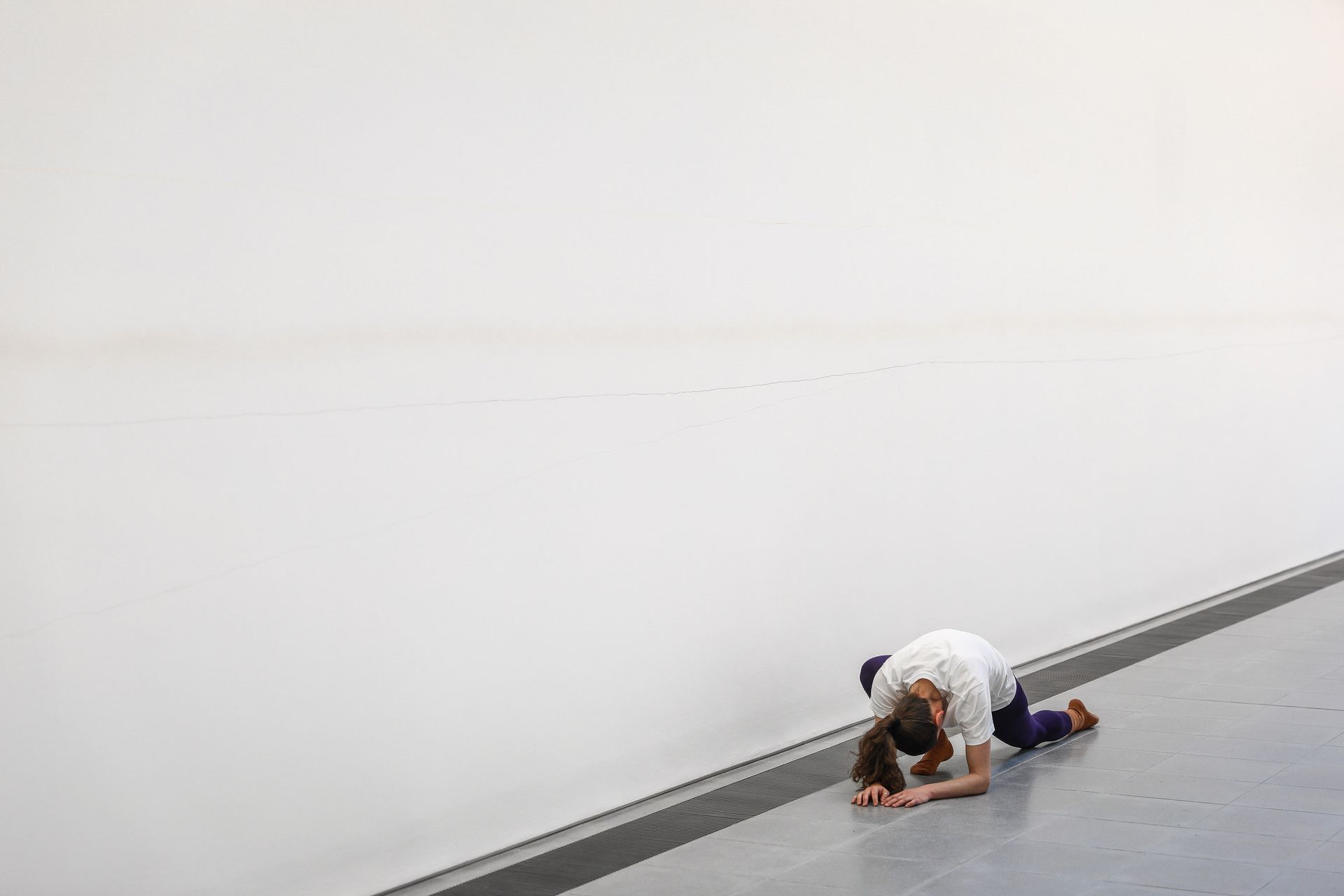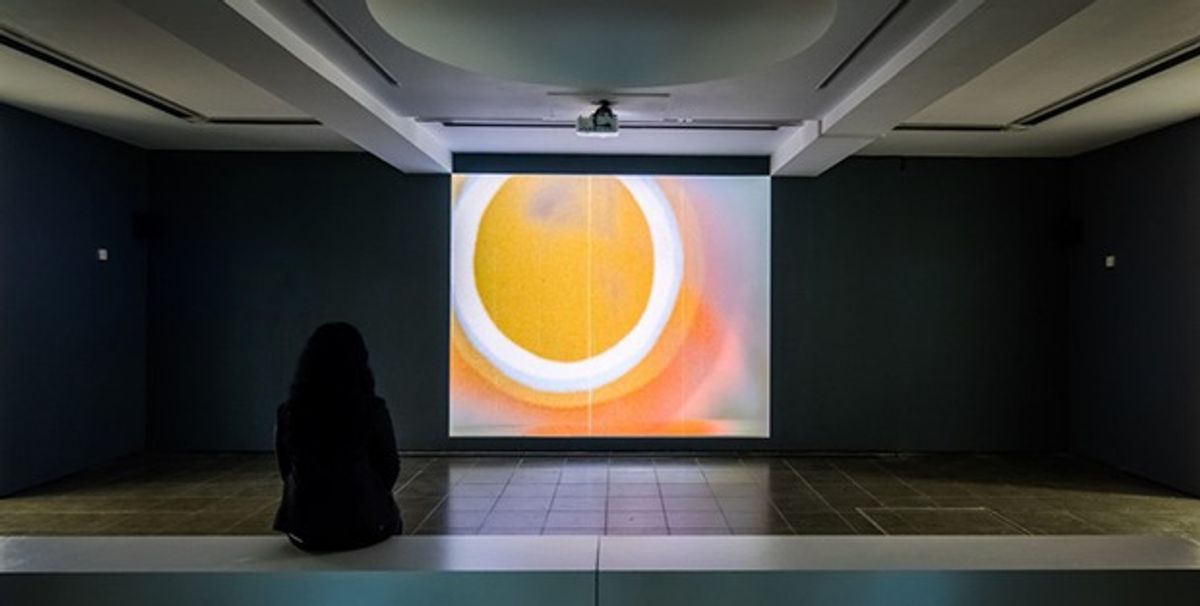Despite a long exhibition history and a house and studio in London that have become a public institution, John Latham (1921–2006) remains an elusive character in contemporary art. The influential career of this British artist, who worked in almost every genre and collaborated with artists from Gustav Metzger to his students at Central St Martins art school in London, has been the subject of a number of exhibitions since he passed away—which is why it is hard to see what makes A World View, a show of his work on now at the Serpentine Galleries in London, different. It’s not a definitive survey, nor does it focus on a single medium or subject. Pevious shows already did that: Whitechapel Gallery focused on his archives in 2010 and Lisson Gallery looked at his exhibition history with a 2010 reinterpretation of his first exhibition with the gallery in 1970.
Admittedly, themes are hard to pinpoint in Latham’s work, which spans from installation and sculpture to painting (and painting made with spray guns) to film. At the Serpentine, there are five films he made in the 1960s and 1970s that conspicuously play at the front of the gallery, along with a few of his One-Second Drawings (1970–71), which were made with spray paint on boards. There are also examples of works that correspond to Latham’s idea of the “least event,” as with Least Event as a Habit (1970), a glass sphere from which the air has been sucked out, creating a vacuum of visible nothingness.
It would be hard to link his varied and large body of work. Mostly, it revolves around knowledge and information and books, which were motifs and subjects throughout his career. His work included towers of burnt encyclopedias and books (Skoobs Towers, 1966); paintings made using books as a pattern; and a six-minute video titled Encyclopedia Britannica (1971), in which every frame is a quick, illegible shot of pages from the encyclopedia. There is also a strong spirituality to Latham's work: an interest in human beings and the limits of their understanding and of the passing of time as a defining experience.
Because so many of Latham's works relate to one another in systems that are not always easy to follow, his art can be impenetrable at times. But it still resonates in many ways. Much of his oeuvre can be read as politically and socially engaged, which is appealing to contemporary artists and viewers. Take, for example, Latham’s involvement with The Artist Placement Group (APG), set up by his wife Barbara Steveni in 1965. The APG temporarily placed artists in public and commercial corporations like the BBC and British Steel to see what would transpire from their involvement. At the Serpentine, there are photographs and documentation of the heaps of coal waste Latham saw while he was working with the planning department of the Scottish Office in Edinburgh. He saw these as unplanned or unconscious land art (Derelict Land Art: Five Sisters, 1976).
Latham’s film Speak (1962), compiled of shots of coloured sheets of paper cut into circular forms, gives its name to an ancillary exhibition at the Serpentine Sackler Gallery, in which four artists—Tania Bruguera, Douglas Gordon, Laure Prouvost and Cally Spooner—respond to Latham’s ideas. At times, their connection to Latham is too obvious; as others, it is too oblique. Gordon's work is a billiard table with only three balls (there’s a handout with rules about how to play the game, which is titled Latham Variations) and footage of himself and Hans Ulrich Obrist visiting Latham. Bruguera’s contribution is an interview in which she discusses the political possibility of her work. In Gordon's and Bruguera’s contributions, “speaking” is taken literally.

Prouvost and Spooner offer a less direct, more generative engagement with of Latham's work. Prouvost—his former studio assistant—shows a new installation, end her Is story (2017), in which she uses a style she has employed before. Along with objects—fake teeth next to a glass of water, two eggs, sunny-side-up, with two empty shells—is audio of the artist’s seductive, playful voice tying the items together in a loose narrative that brings forth some of her memories of Latham. “His…story…history,” the voice lulls. It never exactly coheres into a single story, but it does read like an account of intimate recognition.
Spooner brings in a performer who constantly stretches on the floor (Warm Up, 2016). Nearby, Spooner has drawn five lines in colored pencil across the gallery walls that trace her life through data points on her career (measured on artfacts.net) and her metabolism. These works do not directly address Latham’s production, but in a wall label, Spooner discusses looking at his idea of “event structures,” in which aesthetic interactions are realigned according to measurements of time defined by the artist. “For me, the creation of a state of rehearsal is a transformation of the conventional media of art, into a time/space continuum that is contradictory, durational, marginal, social and vital,” she writes. Both Spooner and Prouvost present work that is in keeping with their recent production, but putting them alongside Latham frames their practices in a new light.
In The Anxiety of Influence (1973), Harold Bloom writes: “Poetic Influence—when it involves two strong, authentic poets—always proceeds by a misreading of the prior poet, an act of creative correction that is actually and necessarily a misinterpretation.” He calls this "perverse, willful revisionism” the condition of Modern poetry. Speak provides us with a watered-down idea of influence, but it's still an energetic experience. The Brugera interview hangs in front of the entrance. To the left is Spooner's performer. And throughout the space, the sound of Gordon's table tennis game (another of his works) reverberates. The two exhibitions expose a linear impulse: to historicise an artist at the Serpentine show, then to ground contemporary work in that history. While it doesn’t give much insight into any of the five artists, it does sketch out some more or less complicated relationships of influence and appreciation. The anxiety is built into that.
• Orit Gat is a writer based in New York and London whose work on contemporary art and digital culture has appeared in a variety of magazines.
• A World View: John Latham, Serpentine Gallery, London, until 21 May
• Speak, Serpentine Sackler Gallery, London, until 21 May


